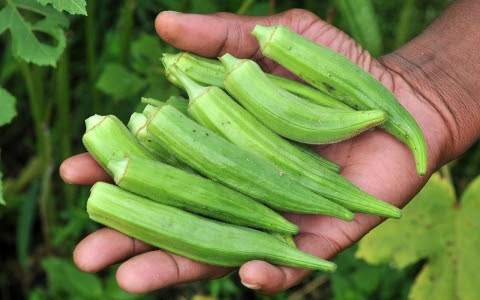Gardening is all about finding creative solutions to maximize space and adapt to your needs. One method I’ve had great success with is growing corn and okra in grow bags. Last season, I experimented with this approach, which turned out to be a game-changer for my garden. Not only did both crops thrive, but the flexibility and convenience of grow bags made the process even more rewarding. In this post, I’ll share the techniques that worked for me and tips to help you achieve similar success.
Why Choose Grow Bags?
Grow bags are versatile and practical, offering several benefits:
- Space Efficiency: Ideal for small gardens or patios, grow bags make it possible to grow crops in confined spaces.
- Improved Drainage: The breathable fabric prevents waterlogging, reducing the risk of root rot.
- Temperature Regulation: The material helps maintain optimal soil temperature, which is especially important for heat-loving crops like corn and okra.
- Mobility: Grow bags are easy to move, allowing you to adjust their placement for maximum sunlight.
Setting Up for Success
Here’s how I set up my grow bags for corn and okra:
- Choosing the Right Grow Bags:
Use 10-15 gallon grow bags for corn to provide ample space for root development. For okra, 5-7 gallon bags work well. Find high-quality grow bags here. - Soil Mix:
A rich, well-draining soil mix is essential. I used a combination of garden soil, compost, and coconut coir to ensure good drainage and nutrient retention. - Planting:
- For corn, I planted five seeds per grow bag, spacing them evenly.
- For okra, I sowed two seeds per bag and thinned them to one seedling after germination.
- Placement:
Position the grow bags in a sunny spot where the plants receive at least 6-8 hours of sunlight daily.

Care Tips for Corn and Okra in Grow Bags
- Watering:
Grow bags tend to dry out faster than traditional garden beds. I check the soil daily and water deeply to keep it consistently moist but not soggy. - Feeding:
Corn and okra are heavy feeders. I apply a balanced, slow-release fertilizer at planting time and supplement with a liquid fertilizer every two weeks. - Staking:
As corn grows tall, it may need support. I placed stakes in each bag to prevent the plants from toppling over. - Mulching:
Adding a layer of mulch helps retain moisture and keeps the soil temperature consistent.
My Observations So Far
Using grow bags for corn and okra has been a game-changer. The plants are thriving, and I’ve noticed fewer issues with pests compared to ground planting. The mobility of the grow bags has also allowed me to protect the plants during unexpected weather changes.
Why You Should Try It
Whether you’re short on space or simply looking for a more flexible way to garden, growing corn and okra in grow bags is worth a try. It’s a manageable, efficient, and rewarding method to grow these delicious crops.
Do you grow corn or okra in grow bags? I’d love to hear your tips and experiences! Share them in the comments below.




Leave a Reply